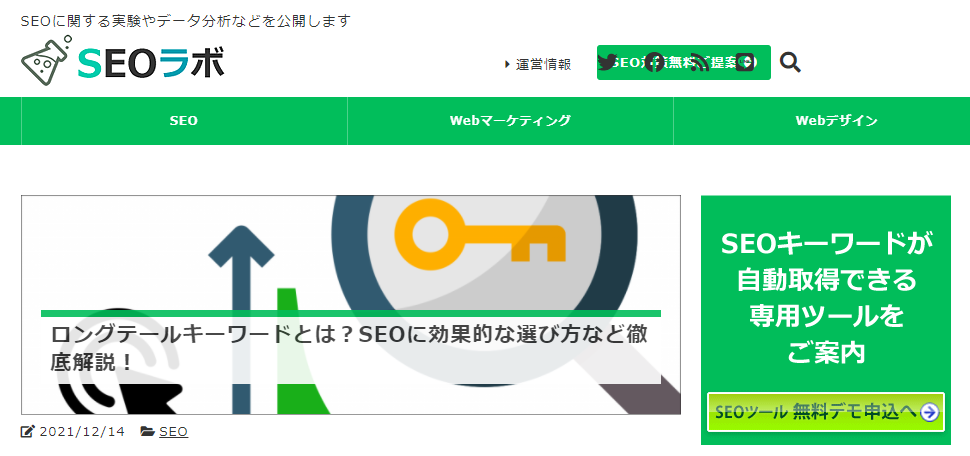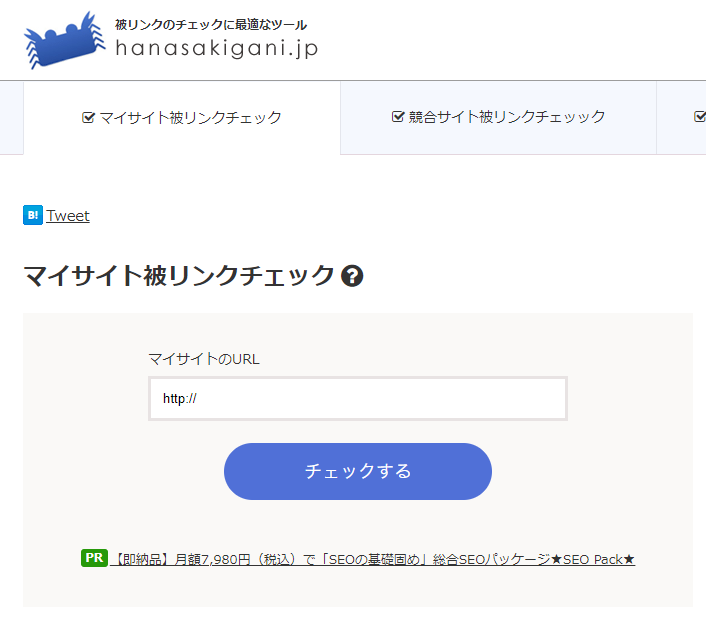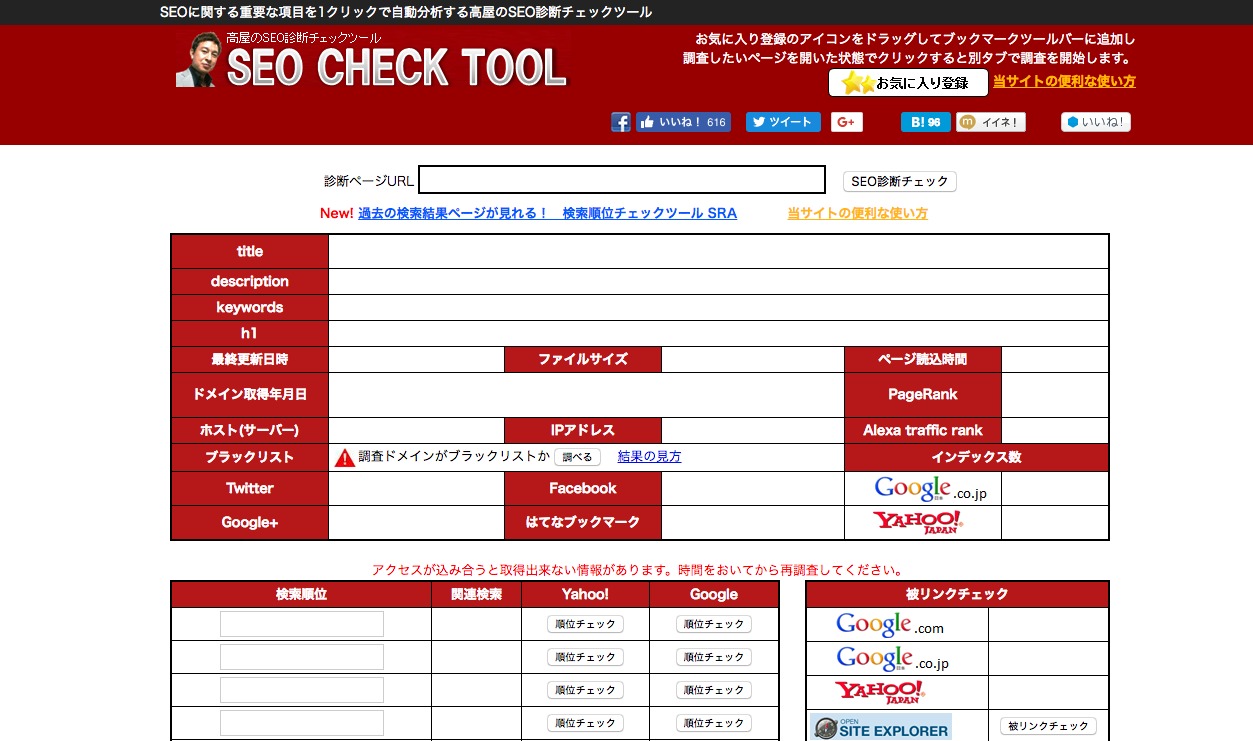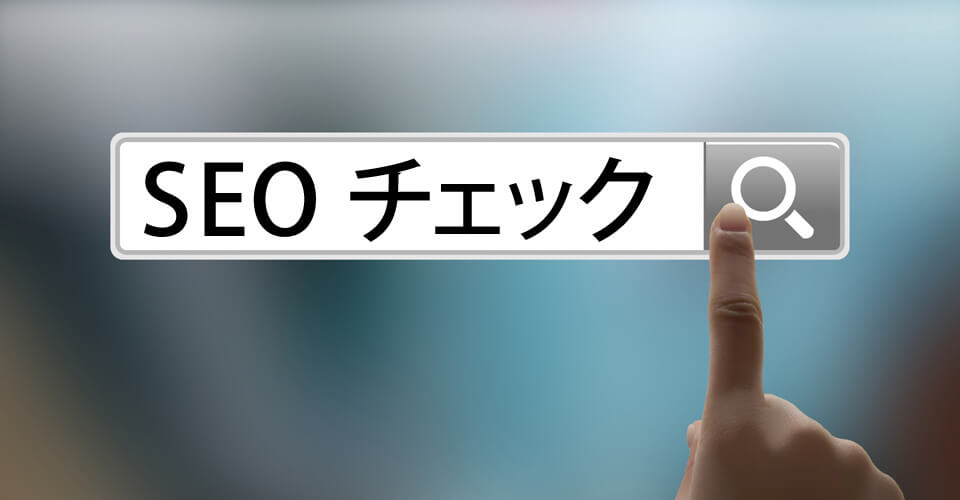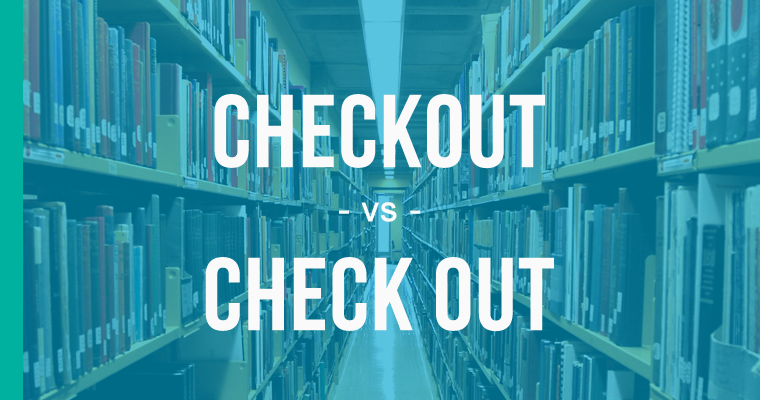When implementing SEO measures, tools that can help you obtain the information necessary for SEO measures are useful. By using these tools, you can achieve results faster and more efficiently.
This time, we will introduce the free tool “SEO Check!”, which allows you to obtain a large amount of information among the SEO tools. Let’s take a look at its features, how to use it, and how to utilize it.
SEO check! What is
“SEO Check!” is a free and easy-to-use SEO tool recommended for beginners. It can be used on the website without the need to install any software.
Just by entering the URL, you can obtain a lot of useful information for SEO measures, such as internal information of the homepage and ranking measurement for each keyword.
It can be used for free, but there is a limit to the number of uses per IP address, up to 200 times per day. Normally, it would be sufficient since it is rare to conduct 200 investigations in a day.
SEO check! Features of
SEO check! Before you actually try using it, first check your SEO! Let’s keep in mind the characteristics of.
SEO check! How to use
Next, SEO check! I’ll show you how to use it. It’s very simple.
Enter the URL of the page you want to investigate into the search box and press “Check!” to display the results.
In addition, there are other tab menus under the title, including “Search Ranking Check”, “Keyword Frequency”, “Original Links”, and “Whois Information”. When you click on each of these tabs, the results will be displayed when you enter the URL in the search box and press “Check!” in the same way as “Site SEO Check”.
First, enter the URL from the site SEO check page, that is, the top page, and press “Check!”. Then, the bookmarklet description and link shown below will be displayed at the bottom right of the results page.
Right-click the link string “SEO Check!” and add it to your bookmarks or favorites, or drag and drop it to your bookmark bar to add it to your browser’s bookmarks.
In the example below, it has been added to Google Chrome’s bookmark bar.
Then try visiting other sites. In that state, select “SEO Check!” that you added to your bookmarks earlier. If you have added it to your bookmark bar, click on “SEO Check!”.
Then a new window will open and the SEO check will be done automatically! Run the “Site SEO Check” and the results will be displayed.
SEO check! Items that can be investigated with
Next, SEO check! We will explain in detail each item that can be investigated.
SEO check! You can obtain the following 5 main pieces of information: Let’s take a look at each.
1. Site SEO check
2. Search ranking check
3. Keyword frequency
4. Outgoing link
5.Whois information
1. Site SEO check
With the site SEO check, you can obtain information on the following “basic check items” and “additional check items”.
Previously, meta description and meta keywords were related to SEO, but now they do not affect SEO ratings. However, since meta descriptions are displayed in search results, they can help users decide whether to visit or not. Therefore, it is a very important text, so it is essential to check it objectively.
・Number of outgoing links (internal links/external links)
Among the pages of the entire site for the URL you entered, the number of “internal links”, that is, links to pages within the site, and “external links”, that is, the number of links to external sites will be displayed. This is convenient because you can quickly check the number of links if you want to use it for SEO.
Click on the “See all outgoing links” link next to the number to see the results of the outgoing links list. Details will be explained in the outgoing link list.
・Last update date and time ・File size ・Reading time
“Last update date and time” seems to be displayed when it is written using the meta tag called meta date. If it is not written, click the link “View HTTP header” to jump to the page where you can view the HTTP header information, and check the date and time of the last update in the Date column.
“Loading time” is especially important. If it takes too long, that’s a problem. This is because Google has announced that page load time is also included in the evaluation of search results. Generally speaking, if it is longer than 3 seconds, consideration is required.
・Alexa ranking
Alexa Ranking is an Amazon subsidiary that aggregates traffic data for websites around the world and ranks them in order of the most accessed websites. You can find out how the homepage is ranked in the world. Although it is not directly related to SEO, the higher the ranking, the more accessed the site.
・Number of backlinks and indexes on Google and Yahoo!
Google and Yahoo! search engines have headings such as “number of backlinks” and “number of indexes,” but the function to display the number of backlinks has ended. Index count refers to the number of pages indexed by search engines.
・Used host and domain registration date
The “Used host” and “Domain registration date” are displayed under the heading “Server/Domain” on the results display screen. You can find out the IP address of the server where the homepage is installed and the date the domain was acquired. There is a text link that says “Whois”, and when you click on it, you will be taken to the “Whois information” results page. The results of “Whois information” will be explained later.
・Number of Facebook likes and social bookmark registrations
You can see the number of likes on Facebook, the number of shares on Twitter, and the number of bookmarks on Hatena Bookmark. You can see how popular the page is on social media and how many times it is shared.
・HTTP header information
“HTTP header information” displays the HTTP response header information from the server. You can know HTTP header information such as the HTTP protocol version, server software type, page last updated date and time, and character code.
2. Search ranking check
Search ranking check is a useful item when implementing SEO measures on a daily basis. You can see the current search rankings on Google and Yahoo! for each keyword. It’s convenient because you can check the rankings for up to three keywords at once.
3. Keyword frequency
Displays the number of words and their ratio in the page with the specified URL. For example, in this example, “Marketing” has been posted on the same page 60 times, accounting for 7.72% of the total.
Just because it appears frequently doesn’t mean it’s good. Blindly increasing the frequency of keyword appearances may have the opposite effect on SEO. If you find that there are fewer keywords than you expected, why not increase them? Also, check to see if “co-occurring words”, or words that are related to important keywords, appear in the list.
4. Outgoing link
Outgoing link check displays a list of all outgoing links from the page with the specified URL. The number of external links, internal links, and nofollow links are also displayed numerically. Bold text is an external link, thin text is an internal link, and green text is a nofollow link.
A nofollow link is one that has the meta tag “nofollow” attached to it. This tag was intentionally added by the page operator to notify search engine crawlers that they should not follow the links on this page. In other words, nofollow is added to pages that you do not want to SEO. When the crawler visits the site, it will ignore the link as if it did not exist.
Examples of when to use nofollow include when linking to untrusted content or when you want to efficiently omit pages that don’t require SEO.
5. Whois information
Whois information displays the Whois information for the domain of the specified URL. You can check detailed information about the domain, such as the domain registrant name, organization name, registration date, expiration date, etc.
SEO check! How to use
SEO check! You can obtain various information like this. So, what can it actually be used for? For reference, SEO check! Here are some examples of how to use it.
Aim for high-quality content by increasing the frequency of important keywords, and at the same time, reviewing and improving titles and content content while taking into account the search intent of searchers.
For example, the domain registration date of our site is “March 25, 2015” displayed in “Registered Date”, so if you count backwards from this date to the present, the domain age is “5 years and 10 months”. I understand.
Google’s official announcement states that domain age has no bearing on search rankings, but SEO experts believe that it does have some bearing on it. It is said that a site that has been in operation for two years or more is more likely to improve its reputation than a site with a new domain that has just been created.
It’s also a good idea to check the domain ages of your competitors to find out how strong their domains are.
SEO check! How to connect to the next one after acquiring the data?
SEO check! There may be cases where, even though they have acquired data, they are unable to translate it into effective measures on their own, or they do not have the knowledge to do so. If you don’t know how to connect it next time, the data you’ve acquired will be wasted.
At ProFuture, we provide comprehensive web marketing support solutions, including “HR SEO,” which focuses on SEO measures including owned media construction, corporate site construction, internal measures, and content production, but SEO Check! In addition to the data that can be obtained with , we obtain the necessary data using various other methods, and use this data to provide support in the following ways.
SEO check! If you have learned about the weaknesses and areas for improvement of your company’s website from the data obtained, but you are unable to fully utilize the data yourself, one way is to use our “HR SEO” and leave it to professionals. .
What is “HR SEO”?
At this point, some of you may want to know more about what “HR SEO” does. Therefore, we will provide an overview of “HR SEO”.
“HR SEO” is an outsourcing service that provides comprehensive web marketing support with a focus on SEO measures for homepages, owned media, etc., based on the information we have cultivated extensively through content creation for media management. We aim to increase access to the homepage and owned media itself, including high rankings for search keywords.
In addition to operation, we also support the construction of high-quality owned media and homepages by leveraging our knowledge and experience in configuration and design during construction and BtoB.
“HR SEO” provides support in two broad areas: “SEO measures/article production” and “owned media.”
1. “SEO measures/article production” support
When it comes to SEO, we use the wide range of information we have cultivated over the years as a top runner in the HR field to provide advice on improving websites specific to human resources and recruitment departments, as well as SEO measures tailored to the situation of your company’s website. By ranking high in search keywords, you can expect effects such as an increase in the number of accesses and inquiries.
ProFuture, which operates “HR Pro” in article production, is able to provide content on the latest trends in recruitment and human resources (HR tech, recruitment, human resource development, mental health, etc.). We can also provide articles based on data from HR Research Institute, a research and research organization in the human resources field.
It will be possible to update useful articles on a regular basis, and you can expect effects such as increasing the number of repeat customers and acquiring leads.
2. “Owned media construction” support
<br/> We often hear from people who have started up their own media, but don’t know how to do SEO, or are struggling to get it to the top of search results.
Owned media construction support can help resolve these issues. We provide total support from planning and production to operation. Some people may want to build their own media from scratch, but want to keep the initial costs as low as possible. In that case, you can publish your company’s own media within “HR Pro”. With HR Pro’s domain power, you can also contribute to initial traffic and page views.
There is no need to prepare a server, and the production period is about 3 to 4 months to publish owned media and build SEO-friendly media.
In addition, owned media itself is a service that can be constructed under the customer’s domain or homepage without using HR Pro’s domain power.
During construction, we may need to take necessary processing and technical measures based on the customer’s designated CMS, platform, and marketing measures, but we will propose and respond in the optimal form.
summary
◆”SEO Check!” is a free and easy-to-use SEO tool. Just by entering the URL, you can get a lot of useful information for SEO measures, such as the internal information of the homepage and the ranking for each keyword.
◆SEO check! The features are that it is easy to use, that it can obtain a lot of data, and that it has a bookmarklet.
◆SEO check! The items that can be investigated can be broadly divided into five categories. There are 1. Site SEO check, 2. Search ranking check, 3. Keyword frequency, 4. Originating links, and 5. Whois information.
Click here for more information on HR SEO


